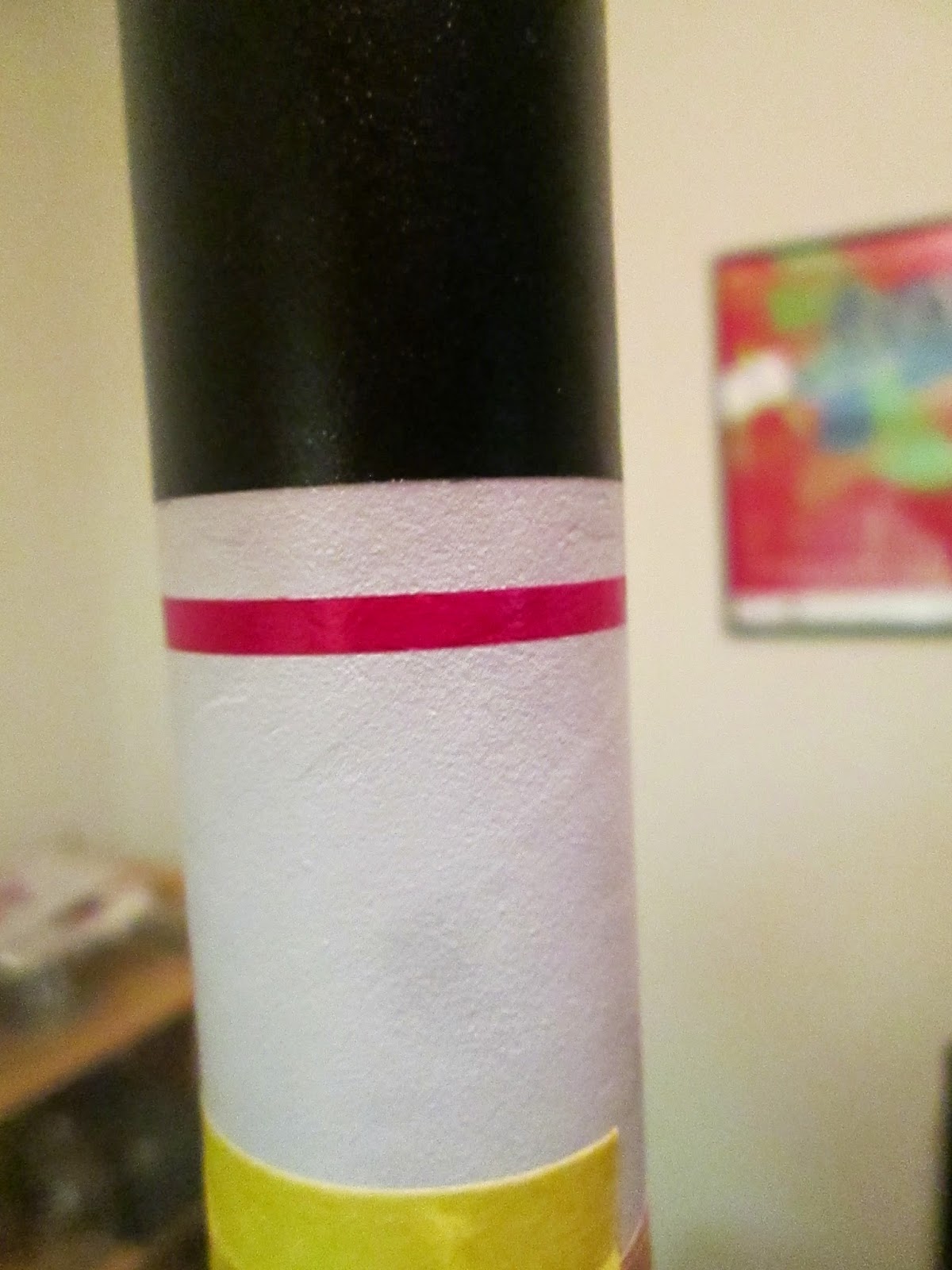Alright, now that your fins are all sanded and the same shape, it's time to shape and fill them.
Strictly speaking, this is not necessary, and if you're building your first rocket, you might want to just skip it. It does take some time - particularly filling the fins. But it will make your fins look much better, smoother, and will make the job look more professional. And it can even make the rocket fly better.
First, you want to shape the fins so that they're more aerodynamic. A fin with a square edge creates a lot more of what's called "pressure drag."
Let me digress for a moment.
There are four forces acting on a rocket affecting its flight. There's gravity, holding the rocket to the Earth. Thrust, which comes from the motor, pushing the rocket upward. Then there's lift - this is a stabilizing force produced by the fins, keeping the rocket moving straight. Then there's drag - the effect of air molecules keeping the rocket from moving faster. Stick your hand out the window in a moving car - that feeling is drag.
Pressure drag is the drag produced from air pressing directly down on the forward surfaces of the rocket. A square fin feels the pressure of the air much more than a rounded fin, or a fin with an airfoil.
 |
| The fin of my first rocket - Estes Der Red Max. I left these square, just as they were, straight from the package. This fin cross section creates much more drag. |
 |
| The Crossfire ISX with rounded fins - much better. In this case, I only rounded the leading edge, so that the "stabilizers" would fit properly. |
Airfoils are complicated and hard to get right, so if you are going to shape a fin for your first rocket, just round the leading and trailing edges (front and back) of the fins.
The fins of the Big Bertha are oddly shaped - no space rocket would ever be shaped like this, unless you're Marvin the Martian.
It's a cartoony, throwback shape, and while there's a definite leading edge, the "trailing edge" is harder to define, since the sides of the fins are at kind of an angle. So I opted to round only the leading edges. Like Der Red Max, this rocket would look fine with square edges, and it's not meant to be a high performance model. But I'm fussy about my fins.
For most rockets, it's not a bad idea to round the leading and trailing edges, as it will make your rocket perform better in flight.
To round the fins, use a medium fine grit of sand paper, say, 220, and a sanding block (or simply hold the paper flat against a table with your fingers - I've done that). Take the fin in one hand, and lay it with the edge to be rounded - I start with the leading edge - against the sand paper with the fin nearly flat on its side. Support the fin by spreading your fingers evenly across the whole span of the leading edge. Now, gently, gently sand the fin back and forth with a sawing motion while lifting the opposite edge upward. Just take off a little bit at a time when you begin. Then flip it over and do the other side of the same edge.
 |
| I should have my fingers closer to the leading edge here. |

At first, you'll just round off the corners. Look at the cross section of the fin often to make sure you're rounding it and not taking off too much wood, or making it pointy.
 Eventually, you'll get to the point where the edge of the fin is nice and round.
Eventually, you'll get to the point where the edge of the fin is nice and round.Go ahead and do the trailing edge of the fin if you are opting to do that.
 |
| Not perfect, but you get the idea. |
 |
| The one on the left looks a bit pointier in this picture, but they were pretty close |
What I mean by "filling" the fins is that you're essentially going to hide the wood grain and make the fins look smooth - as though they were made of plastic, metal or glass. If you merely glue on the fins and then prime and paint them, you won't hide that wood grain - in fact, you'll accentuate it.
This can be done with a number of products.
The first is something called sanding sealer. For years in model rocketry, this was the standard. But I've never used it. It seems as though most rocketeers now view sanding sealer as a bit old-fashioned. Apparently, it can gum up the sand paper pretty badly, which means you have to switch sandpaper several times. And it smells bad. And it's expensive. But I might give it a try some time, because a lot of old-timers swear by it.
Another thing you can do is paper the fins. This means you apply pieces of printer paper to either side of the fins with adhesive, then smooth the paper out, trim it tight, and fit it perfectly to the shape of the fins. It works great, apparently, and takes less time, but I haven't tried it yet, so I'm not going to talk about that here. Also, the fins on the Big Bertha are kind of weird, and I think that papering is easier if you have basic, four-sided fins with all straight edges. So I decided not to try it on this rocket.
What I use - and a lot of rocketeers use - is something called carpenter's wood filler - CWF for short. A favorite brand is Elmer's Wood Filler.
This stuff is a putty used for filling gouges in woodworking. It comes in a can and looks like really thick frosting. But you can thin it with water, which is what we'll do here.
CWF
is messy, obviously, so put down a paper. You'll need a small, cheap
paint brush, a tiny bowl and tiny spoon or something to stir with, and a
small amount of water. I just use the spoon to add a little water at a
time, but an eye dropper would be ideal. You will also need somewhere to
put the fins as they dry.
Some
people push pins into the root edge of the fin - that's the edge which
you glue to the rocket. They use the pins to hold the fins like a
popsicle, then push the pins into some foam to let the fins dry. It's
important to do both sides of the fin quickly and evenly, in this case.
The water in the CWF will cause the fins to warp if you don't act
quickly.
I
have found that my fins sometimes warp even if I do this "correctly."
So I get out some parchment paper and the Riverside Shakespeare.
You're going to thin the CWF a bit - there are different ratios, and I just kind of eyeball it, but Chris Michielssen has a formula that he says works every time. Check that out if you want to make sure to get good results.
Brush
the CWF onto the fins, on all edges, except for the root edge (well,
that's what they say. But I get CFW on root edges all the time. I just
sand it off). I've heard that you go with the grain, or against the
grain, or one way first and then the other way. I haven't figured out
which way is best. But I'm going to put on several coats, so I don't
know how much that really matters.
Paint
the CWF onto both sides, and either stick your pins into your foam, or
put the fins between the sheets of parchment and put Shakespeare on top.
If you do press your fins between books, it will take a little longer
to dry, but I find that after about 45 minutes to an hour, enough
moisture has wicked away from the fins that I can take the book off,
peel the fins from the parchment, and let them air dry, without any
warping.
Let
these fins dry completely. I usually let them dry for a couple of hours
to overnight. Once they're really dry, it's time to sand them smooth.
In Part 3, we'll finish the fins and move on to the airframe and the motor mount.















































